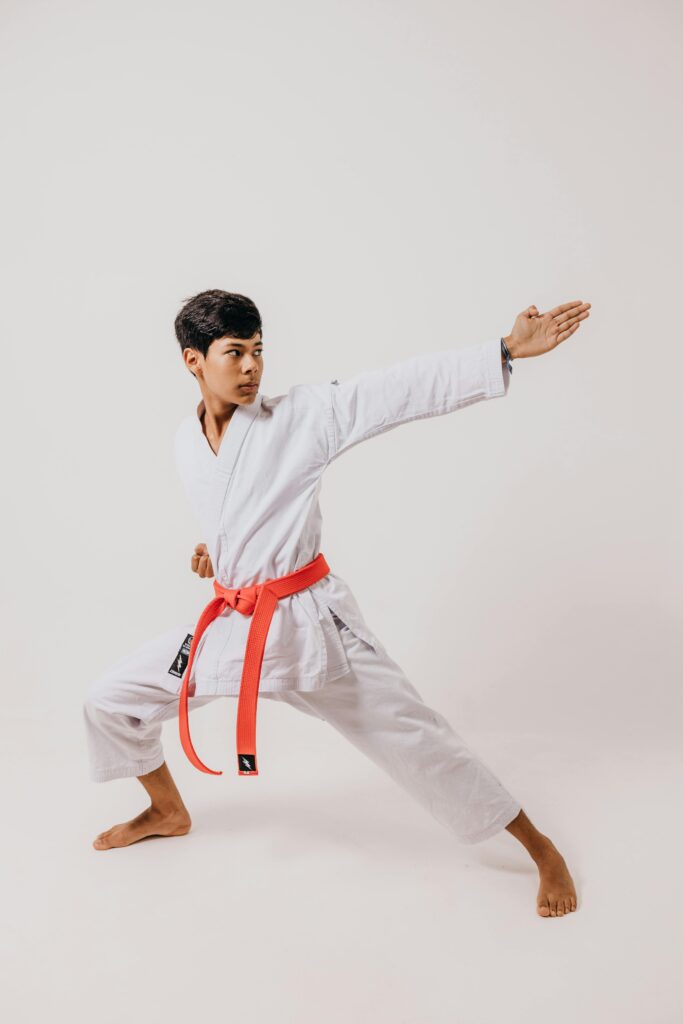Imagine being surrounded by vibrant sculptures that seem to come to life, moving and dancing in the wind. This is the mesmerizing world of kinetic sculpture, where art and motion intertwine to create captivating experiences. From massive outdoor installations to intricate tabletop designs, kinetic sculpture pushes the boundaries of imagination and invites you to marvel at the beauty of movement. Explore the wondrous realm of these mesmerizing creations and immerse yourself in the art of kinetic sculpture.

The History of Kinetic Sculpture
Early Origins
The origins of kinetic sculpture can be traced back to ancient civilizations, where mechanical elements were incorporated into art and religious rituals. One of the earliest known examples is the Ancient Greek automaton, a mechanical figure that could move in a lifelike manner. These early experiments laid the foundation for the development of kinetic sculpture in later centuries.
Alexander Calder and Mobiles
One of the most significant figures in the history of kinetic sculpture is Alexander Calder. In the early 20th century, Calder began experimenting with the concept of mobiles, which are sculptures that move and change shape through the action of air currents. Calder’s mobiles revolutionized the art world, bringing movement and dynamism into the realm of sculpture.
The Influence of Dada and Surrealism
The Dada and Surrealist movements of the early 20th century also played a significant role in shaping the development of kinetic sculpture. Artists associated with these movements sought to challenge traditional notions of art and explore new ways of creating meaning. The use of motion and mechanical elements allowed them to push the boundaries of traditional sculpture and engage with ideas of chance, irrationality, and the unconscious.
The Kinetic Art Movement
In the mid-20th century, the kinetic art movement emerged, bringing together artists who shared an interest in exploring movement and change in their work. This movement emphasized the use of mechanical or kinetic elements to create artworks that were in a constant state of flux and transformation. The kinetic art movement gained popularity in the 1950s and 1960s and continues to influence artists to this day.
Different Types of Kinetic Sculpture
Mobiles
Mobiles, as pioneered by Alexander Calder, are perhaps the most well-known type of kinetic sculpture. These sculptures are suspended from the ceiling and consist of carefully balanced elements that move and rotate in response to air currents. Mobiles create a mesmerizing and ever-changing display as they gently sway and interact with their environment.
Wind Sculptures
Wind sculptures harness the power of natural wind currents to create movement and visual interest. These sculptures are often large-scale and installed outdoors, where they can gracefully sway and twist in response to the wind. Wind sculptures can be made from a variety of materials, such as metal, fabric, or even recycled materials.
Water Sculptures
Water sculptures use water as a dynamic element to create movement and sound. These sculptures can take the form of fountains, cascades, or interactive installations that respond to the presence of viewers. Water adds a sensory dimension to kinetic sculpture, with its reflective and fluid nature enhancing the overall experience.
Motorized Sculptures
Motorized sculptures rely on mechanical components, such as motors and gears, to achieve movement. These sculptures can range from small-scale, intricately designed pieces to large installations that fill entire rooms or outdoor spaces. Motorized kinetic sculptures often incorporate complex mechanisms and programming, allowing for precise control over the movements and interactions of the artwork.
Interactive Sculptures
Interactive kinetic sculptures invite viewers to actively engage with and participate in the artwork. These sculptures often incorporate sensors or other input devices, enabling them to respond to the presence, movement, or touch of the viewer. Through interaction, viewers become an integral part of the artwork, influencing and shaping its movement and behavior.
Technical Aspects of Kinetic Sculpture
Materials and Construction
Kinetic sculptures can be made from a wide range of materials, including metal, wood, glass, plastic, and more. The choice of material depends on the desired aesthetic, durability, and feasibility of the sculpture. The construction of kinetic sculptures often requires a high level of craftsmanship and precision, as the mechanical components need to be carefully integrated into the overall design.
Mechanical Components
Mechanical components are crucial in kinetic sculpture, as they enable movement and interaction with the artwork. These components can include motors, gears, pulleys, and other mechanisms that translate energy into motion. The selection and placement of mechanical components require careful consideration to ensure smooth and reliable operation.
Kinetic Systems and Mechanisms
Kinetic systems and mechanisms refer to the arrangement and configuration of the mechanical components within the sculpture. The choice of these systems and mechanisms depends on the desired movement and behavior of the artwork. Kinetic systems can range from simple linear or rotational movements to more complex combinations that create intricate and unpredictable patterns of motion.
Balance and Motion
Achieving balance is critical in kinetic sculpture to ensure smooth and harmonious movement. Proper balance allows the sculpture to move freely without tipping or becoming unstable. Artists often employ techniques such as counterweights, tension springs, or adjustments in weight distribution to achieve the desired balance and motion.
Famous Kinetic Sculptures and Artists
Alexander Calder’s ‘Le Grand Vitesse’
‘Le Grand Vitesse’ is a monumental kinetic sculpture created by Alexander Calder in 1969. Located in Grand Rapids, Michigan, it is one of Calder’s largest works and a landmark in the city. The sculpture consists of a large red steel structure with various moving elements that respond to wind currents. ‘Le Grand Vitesse’ showcases Calder’s mastery of combining form and motion to create a visually striking and ever-changing artwork.
George Rickey’s ‘Two Open Rectangles Horizontal Jointed Gyratory III’
George Rickey was a prominent kinetic sculptor known for his elegant and minimalist artworks. ‘Two Open Rectangles Horizontal Jointed Gyratory III’ is one of his notable works, characterized by its geometric simplicity and precise mechanical movements. The sculpture features two metal rectangles that move in a synchronized manner, creating mesmerizing patterns of rotation and interaction.
Len Lye’s ‘Wind Wand’
‘Wind Wand’ is a kinetic sculpture created by New Zealand artist Len Lye in 2001. Standing at over 20 meters tall, the sculpture consists of a flexible, tapered metal rod that sways and bends with the wind. ‘Wind Wand’ represents Lye’s fascination with movement and energy, capturing the essence of wind through its graceful and ever-changing form.
Rebecca Horn’s ‘The Triumph of the Tire’
Rebecca Horn is an artist known for her innovative and thought-provoking kinetic sculptures. ‘The Triumph of the Tire’ is a notable example of her work, featuring a large tire suspended from the ceiling by a motorized mechanism. The sculpture rotates slowly and unpredictably, inviting viewers to contemplate themes of time, motion, and human existence.

The Aesthetic and Conceptual Significance of Kinetic Sculpture
Emphasis on Movement and Change
Kinetic sculpture places a strong emphasis on movement and change as essential elements of the artwork. By introducing motion into the sculpture, artists create dynamic compositions that evolve over time. This emphasis on movement challenges traditional notions of static art, inviting viewers to experience the artwork in a more engaging and interactive way.
Exploration of Time and Space
Kinetic sculpture provides artists with a unique platform to explore concepts of time and space. The ever-changing nature of the artwork allows for a deeper exploration of the passage of time and the relationship between the artwork and its surroundings. Kinetic sculptures can create a sense of temporality and spatial transformation, evoking a feeling of transience and impermanence.
Interaction with the Environment
One of the defining characteristics of kinetic sculpture is its interaction with the environment. Whether it be the wind, water, or the presence of viewers, the sculpture responds and adapts to its surroundings. This interaction blurs the line between the artwork and the surrounding space, creating a more immersive and integrated experience for the viewer.
Political and Social Commentary
Kinetic sculpture has often been used as a medium for political and social commentary. Artists use the movement and physical presence of the sculpture to convey messages and provoke thought. Whether it be addressing environmental issues, questioning societal norms, or advocating for change, kinetic sculpture can serve as a powerful tool for artistic expression and activism.
The Kinetic Sculpture Exhibition Circuit
The Importance of Museums and Galleries
Museums and galleries play a crucial role in the exhibition of kinetic sculpture. These institutions provide a platform for artists to showcase their work to a wider audience, preserving and documenting the history of kinetic sculpture. Exhibiting in museums and galleries also lends credibility and recognition to artists, allowing them to reach collectors, curators, and art enthusiasts.
Outdoor Exhibitions and Installations
Outdoor exhibitions and installations offer a unique opportunity to experience kinetic sculpture in a natural and unrestricted setting. Public parks, urban spaces, and sculpture gardens often host large-scale kinetic artworks, providing viewers with a chance to interact with the sculpture on a more intimate and personal level. Outdoor exhibitions also bring art to a broader audience, making it accessible to people beyond traditional art spaces.
Kinetic Sculpture Festivals and Competitions
Kinetic sculpture festivals and competitions bring together artists, collectors, and enthusiasts from around the world. These events provide a platform for artists to showcase their work, exchange ideas, and push the boundaries of kinetic sculpture. Festivals and competitions often feature workshops, lectures, and interactive experiences, fostering a sense of community and celebration of the art form.

Kinetic Sculpture as Public Art
Integration with Public Spaces
Kinetic sculpture can transform public spaces, adding visual interest and enhancing the overall atmosphere. By integrating kinetic sculptures into urban landscapes, parks, and plazas, artists have the opportunity to engage with a diverse range of viewers, regardless of their background or familiarity with art. The presence of kinetic sculptures in public spaces enriches the environment, contributing to the vibrancy and cultural identity of a place.
Engagement with the Community
Public kinetic sculptures have the power to prompt community engagement and interaction. They invite people to pause, observe, and contemplate the artwork, fostering a sense of curiosity and dialogue. Kinetic sculptures can become focal points for community gatherings and events, acting as catalysts for social connections and shared experiences.
Challenges and Considerations
The integration of kinetic sculpture in public spaces presents various challenges and considerations. Artists and curators need to ensure the durability and safety of the artwork, taking into account factors such as weather conditions, maintenance requirements, and public accessibility. Additionally, securing funding and addressing logistical constraints are essential for successful implementation. Collaboration with local governments, community organizations, and stakeholders can help navigate these challenges and ensure the long-term viability of public kinetic sculptures.
The Influence of Technology on Kinetic Sculpture
Incorporation of Digital and Electronic Components
Advancements in technology have opened up new possibilities for kinetic sculpture. Artists now have access to a wide range of digital and electronic components that can be integrated into their artworks. Sensors, microcontrollers, and programmable motors allow for precise control over the movement and behavior of the sculpture. The incorporation of digital elements adds another layer of complexity and interactivity to kinetic sculptures, engaging viewers in innovative and unexpected ways.
Advancements in Kinetic Systems
Technological advancements have also led to the development of more sophisticated and efficient kinetic systems. Improved materials, bearings, and fasteners enable smoother and more precise movements. Additionally, advancements in robotics and automation have expanded the scope of what can be achieved with kinetic sculpture, pushing artists to explore new possibilities and experiment with novel forms of movement.
Augmented Reality and Virtual Reality
The emergence of augmented reality (AR) and virtual reality (VR) technologies offers exciting prospects for the future of kinetic sculpture. These technologies enable artists to create immersive and interactive experiences that transcend physical limitations. AR and VR can be used to augment or simulate the presence of kinetic artworks in real or virtual environments, allowing for new modes of artistic expression and engagement.
The Kinetic Sculpture Maker’s Toolkit
Tools and Equipment
Creating kinetic sculptures requires a diverse range of tools and equipment. Artists may need traditional hand tools, such as hammers, drills, and saws, as well as specialized tools for working with specific materials or assembling complex mechanisms. Additionally, artists may rely on computer-aided design (CAD) software and 3D printers to prototype and fabricate components with precision.
Skills and Techniques
Developing skills and techniques specific to kinetic sculpture is essential for achieving successful artworks. This can include proficiency in metalworking, carpentry, electronics, programming, and kinetics. Artists must be proficient in understanding and manipulating materials, be well-versed in various mechanical systems, and have an understanding of design principles and aesthetics.
Resources and References
Artists and enthusiasts interested in kinetic sculpture can benefit from a wide range of resources and references available. Books, websites, and online forums provide valuable technical information, historical context, and inspiration. Visiting museums, galleries, and exhibitions dedicated to kinetic art can also offer firsthand experiences and insights into the field.
Appreciating and Collecting Kinetic Sculpture
Understanding Value and Authenticity
When appreciating and collecting kinetic sculpture, understanding the value and authenticity of the artwork is crucial. Factors such as the artist’s reputation, the scarcity of the piece, the technical complexity, and the historical significance all contribute to the value of kinetic sculptures. Collectors should also take into account the condition and provenance of the artwork when determining its worth.
Displaying and Maintaining Kinetic Sculpture
Proper display and maintenance are essential for preserving the integrity and longevity of kinetic sculptures. Due to their mechanical nature, kinetic artworks may require periodic maintenance, cleaning, and calibration to ensure optimal performance. In terms of display, considerations such as lighting, environmental conditions, and security should be taken into account to showcase the sculptures in their best light and protect them from potential damage.
Supporting Emerging Artists
Supporting emerging artists working in the field of kinetic sculpture is vital for the growth and evolution of the art form. Purchasing artworks, attending exhibitions, and spreading awareness through social media and word-of-mouth can provide valuable support to artists at the beginning of their careers. Collaborating with local art organizations and institutions to promote and showcase emerging talent is also a meaningful way to contribute to the kinetic sculpture community.
In conclusion, the history of kinetic sculpture spans ancient civilizations to the modern art world. Through the exploration of different types of kinetic sculpture, the technical aspects involved, and the famous artists and artworks that have shaped the field, it is evident that kinetic sculpture is a dynamic and evolving art form. From its aesthetic and conceptual significance to its integration into public spaces and the influence of technology, kinetic sculpture continues to captivate and inspire viewers. By appreciating and collecting kinetic sculpture, supporting emerging artists, and engaging with the vibrant exhibition circuit, we can contribute to the continued growth and appreciation of this unique and exciting art form.

